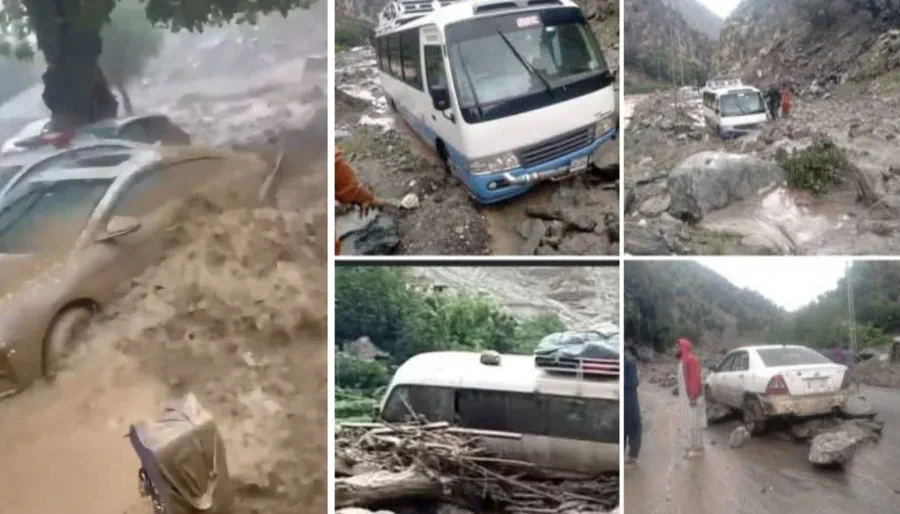Widespread Destruction Across the Country
Pakistan is grappling with one of the deadliest monsoon seasons in recent years. Torrential rains and flash floods have wreaked havoc across the country, submerging low-lying urban areas, sweeping away homes, and cutting off vital road links.
According to the Pakistan Meteorological Department (PMD), heavy rainfall will continue over the next 24 hours in several regions, including Islamabad, Lahore, Karachi, Quetta, and Peshawar. Authorities have issued warnings for urban flooding and landslides, urging citizens to avoid unnecessary travel.
Khyber Pakhtunkhwa Worst Hit
The northwestern province of Khyber Pakhtunkhwa (KP) has borne the brunt of the disaster. Since 15 August, flash floods, cloudbursts, and landslides have claimed 358 lives, according to the Provincial Disaster Management Authority (PDMA). Women and children are among the victims, while more than 180 others have been injured.
Hundreds of homes have been completely destroyed or partially damaged. Buner district has reported the highest number of fatalities, with 225 deaths. Other affected districts include Swat, Bajaur, Shangla, Dir, Battagram, and Swabi.
Schools Closed to Ensure Safety
In response to the devastation, the KP government has ordered all public and private educational institutions in Malakand division and other affected districts to remain closed from 19 to 25 August. Officials said the decision was taken to protect children and ensure rescue operations are not disrupted.
Federal Government and Military Step In
At a joint press conference, Information Minister Attaullah Tarar, military spokesperson Lieutenant General Ahmed Sharif Chaudhry, and National Disaster Management Authority (NDMA) Chairman Lieutenant General Inam Haider Malik outlined the ongoing relief efforts.
So far, more than 25,000 people have been evacuated to safer areas. The Pakistan Army and civilian agencies are jointly engaged in rescue and rehabilitation operations. Relief supplies, medical aid, and temporary shelters are being provided to the displaced population.
According to the military, eight rescue teams and six medical camps are currently active in affected areas. Over 6,000 people have received emergency medical treatment, while army helicopters continue to deliver food and relief goods to remote villages cut off by floods.
Further Rains Expected
NDMA chief Lieutenant General Inam Haider Malik warned that another strong spell of monsoon rains is expected by 23 August. He noted the heightened risk of glacier melt, landslides, and flash floods in northern areas. Work to restore damaged roads and bridges has been accelerated to maintain access for relief operations.
Tragedy in Swabi
Rescue workers in Swabi district recovered 11 more bodies from the rubble of collapsed houses in Gadon village. Earlier this week, a cloudburst in Swabi killed at least 18 people and left dozens missing, further compounding the district’s tragedy. Earlier, ten bodies had been retrieved from the same site. Local residents fear dozens remain trapped under the debris. Army personnel, Rescue 1122, and charity organizations are working around the clock to recover survivors.
Rising National Death Toll
Nationwide, the disaster has claimed at least 695 lives, NDMA figures show. The highest death toll has been recorded in Khyber Pakhtunkhwa with 425 fatalities, followed by Punjab with 164. Other provinces and territories have also suffered losses: Sindh (29), Gilgit-Baltistan (32), Balochistan (22), Azad Kashmir (15), and Islamabad (8).
More than 780 homes have been damaged in Khyber Pakhtunkhwa alone, while thousands remain at risk across the country.
Flood Alert in Punjab
Meanwhile, the PDMA in Punjab has issued a high flood alert for the Indus River at Taunsa. The water flow has exceeded 500,000 cusecs and may rise further. Authorities have directed local administrations to take emergency measures and advised residents of vulnerable areas to move to safer ground.
Appeal for Public Cooperation
The government has placed all relevant departments on high alert. Officials are urging the public to follow safety advisories, cooperate with district administrations, and remain vigilant.
Pakistan, which contributes less than 1% to global greenhouse gas emissions, is among the countries most vulnerable to climate change. In 2022, unprecedented monsoon floods killed more than 1,700 people and displaced millions. Experts warn that extreme weather events are likely to intensify as global temperatures continue to rise.















